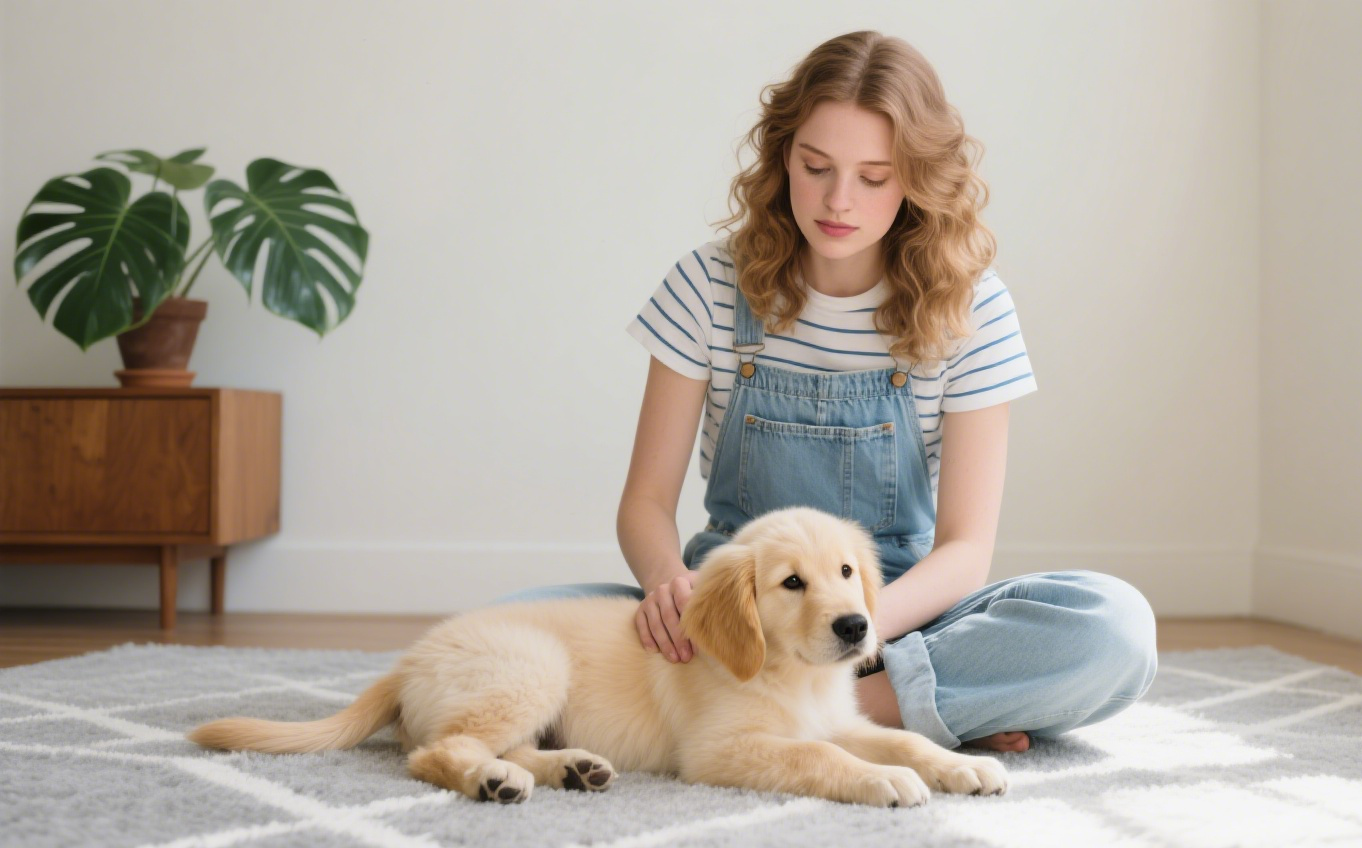As a dog parent, I’m always looking for safe, budget-friendly ways to help my pup live a long, healthy life. Beyond kibble, there are plenty of vet-approved human foods that are safe for dogs — and actually beneficial. Below is a clear list you can save and refer to anytime.
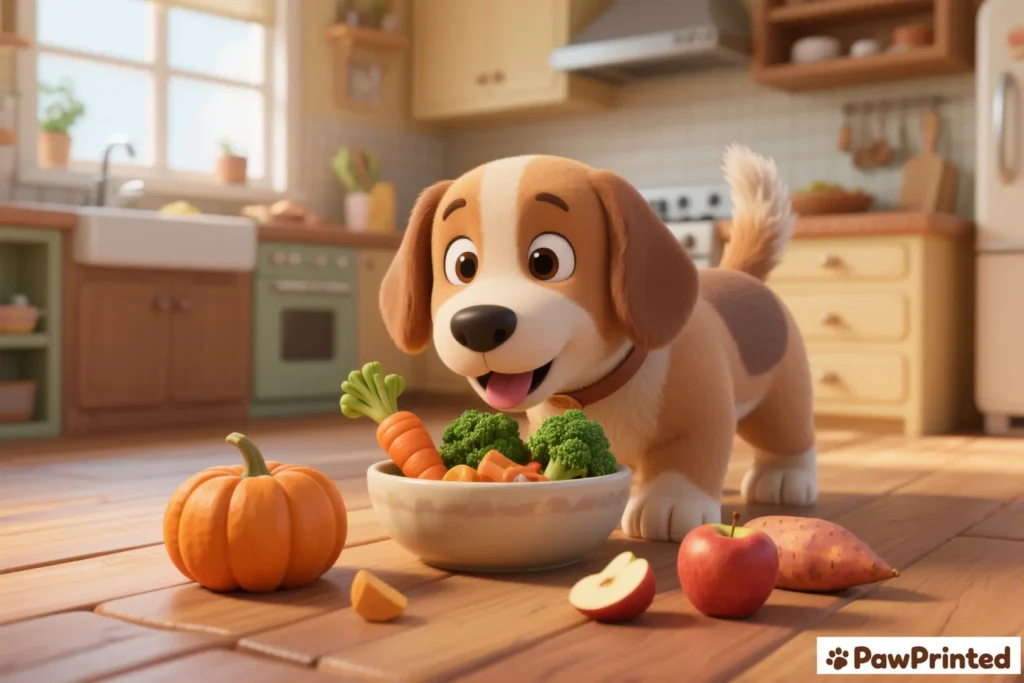
12 Healthy Human Foods for Dogs (Vet Approved)
| Food | Benefit for Dogs |
|---|---|
| Pumpkin | Rich in fiber; supports healthy digestion. |
| Carrot | High in vitamin A; great for vision and eye health. |
| Yogurt (plain, unsweetened) | Probiotics for gut balance and smoother digestion. |
| Winter Melon | Hydrating; gentle on the kidneys. |
| Broccoli (small amounts) | Antioxidants that help overall vitality. |
| Cabbage | Vitamins that support skin and coat. |
| Shrimp (cooked, unseasoned) | Lean protein with essential minerals. |
| Duck (cooked, plain) | Protein variety; often well-tolerated; may help with mild tear stains. |
| Kelp | Mineral-rich; supports healthy fur and skin. |
| Tomato (ripe, small amounts) | Natural vitamin C for immune support. |
| Sweet Potato | Fiber for healthy bowel movements; gentle energy. |
| Apple (no seeds/core) | Pectin helps regulate digestion; light, crunchy treat. |
Tip: Introduce one new food at a time, in small portions, and watch for any signs of sensitivity. Keep seasonings, salt, sugar, onions, garlic, and sauces off the menu.

Why These Foods Help
Fiber-rich options like pumpkin and sweet potatoes can calm sensitive stomachs and keep things regular. Probiotic-rich yogurt supports a healthy microbiome. Colorful veggies like broccoli and cabbage deliver antioxidants that fight everyday oxidative stress. Rotating proteins such as shrimp and duck keeps meals interesting and may help picky eaters. Kelp adds trace minerals that support skin and coat, while hydrating foods like winter melon are gentle and refreshing.
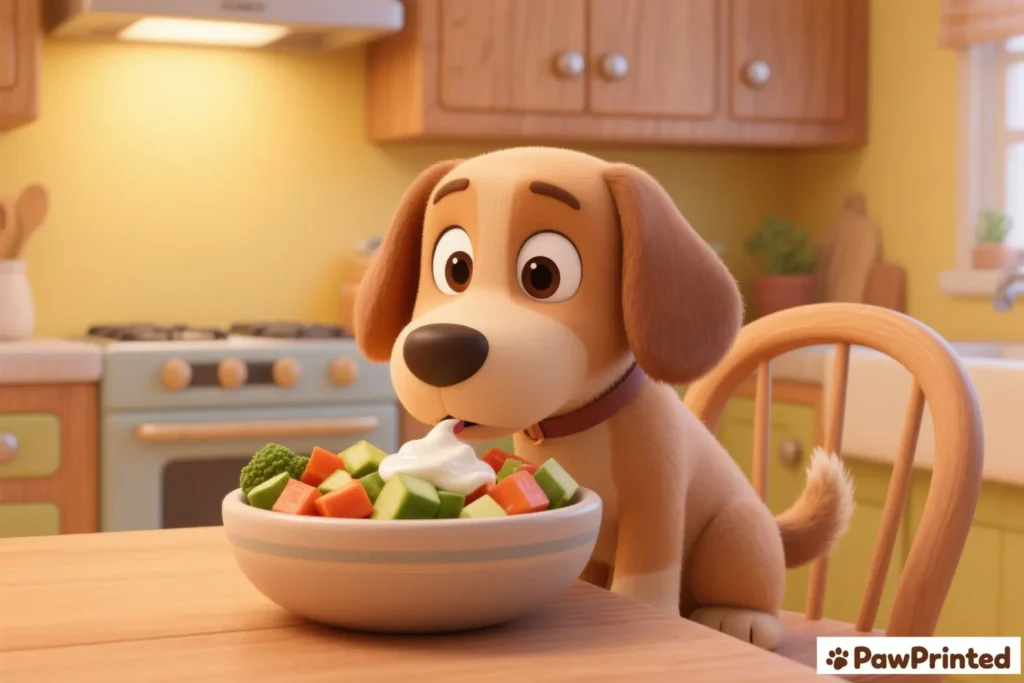
Serving Tips & Portions
- Use these as toppers or healthy snacks — not full meal replacements.
- Start with 1–2 teaspoons for small dogs, 1–2 tablespoons for medium dogs, and up to 1/4 cup for large dogs, a few times per week.
- Serve plain and cooked when needed (no seasoning, no oil, no butter).
- Always remove seeds/cores (apples), avoid unripe tomatoes, and cook seafood/meat thoroughly.
- If your dog has a medical condition or food allergies, consult your vet before making changes.
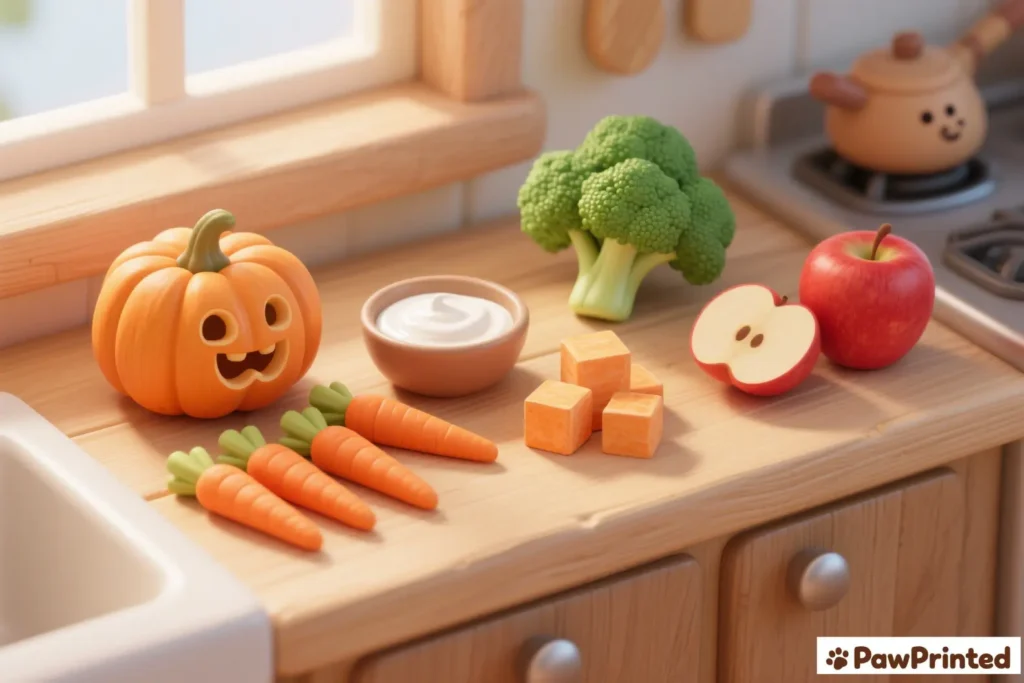
FAQ
Most healthy adult dogs can enjoy them in moderation. Introduce one at a time and monitor for any reactions, especially if your dog has a history of sensitivities.
Think “sprinkle and rotate.” Offer small portions 2–4 times per week as toppers or treats. Balance and variety are key.
Avoid grapes/raisins, chocolate, xylitol, onions, garlic, alcohol, caffeine, and heavily salted or seasoned foods. When in doubt, skip it or ask your vet.
Yes, but introduce very slowly and in tiny portions. Puppies have delicate tummies — always check with your vet for age-appropriate guidance.
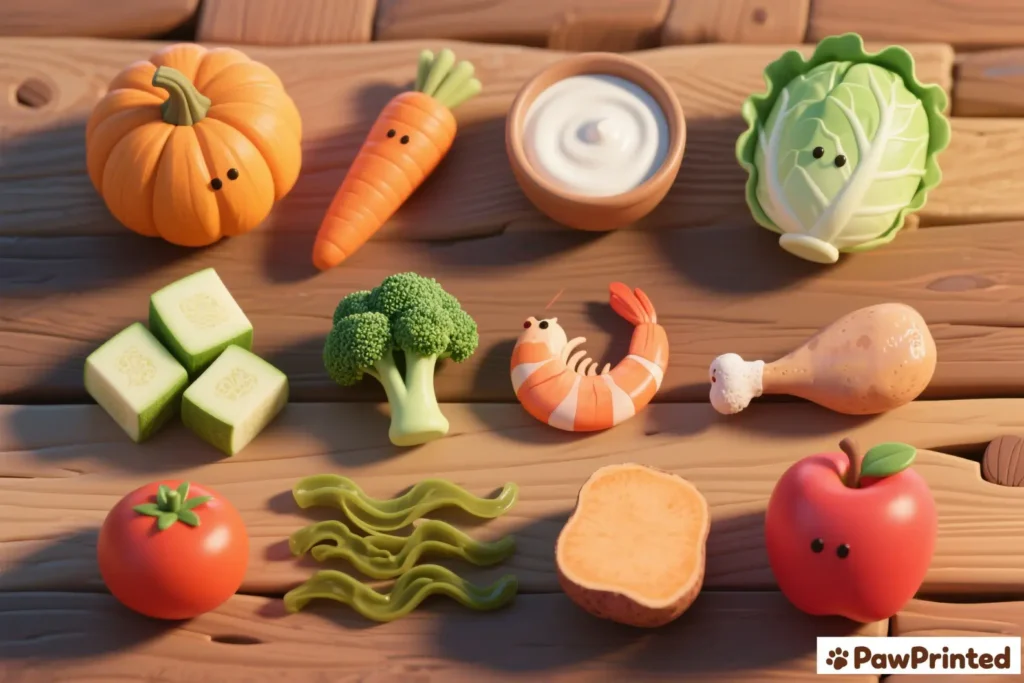
Which Dogs Can Eat This?
Great for: healthy adult dogs, selective eaters who need variety, pups needing extra fiber or antioxidants. Use caution with: dogs with chronic kidney disease, dogs on prescription diets, or dogs with known food allergies — ask your vet first.
Keep Learning (Helpful Guides)
Final Thoughts
Adding safe, vet-approved human foods to your dog’s bowl is a simple way to level up nutrition without breaking the bank. If you found this helpful, share it with a fellow dog parent — and tell us in the comments which food your pup loved most!
Follow PawPrinted On Pinterest
New dog food ideas, gentle tummy tips, and healthy add-ins you can try this week.

